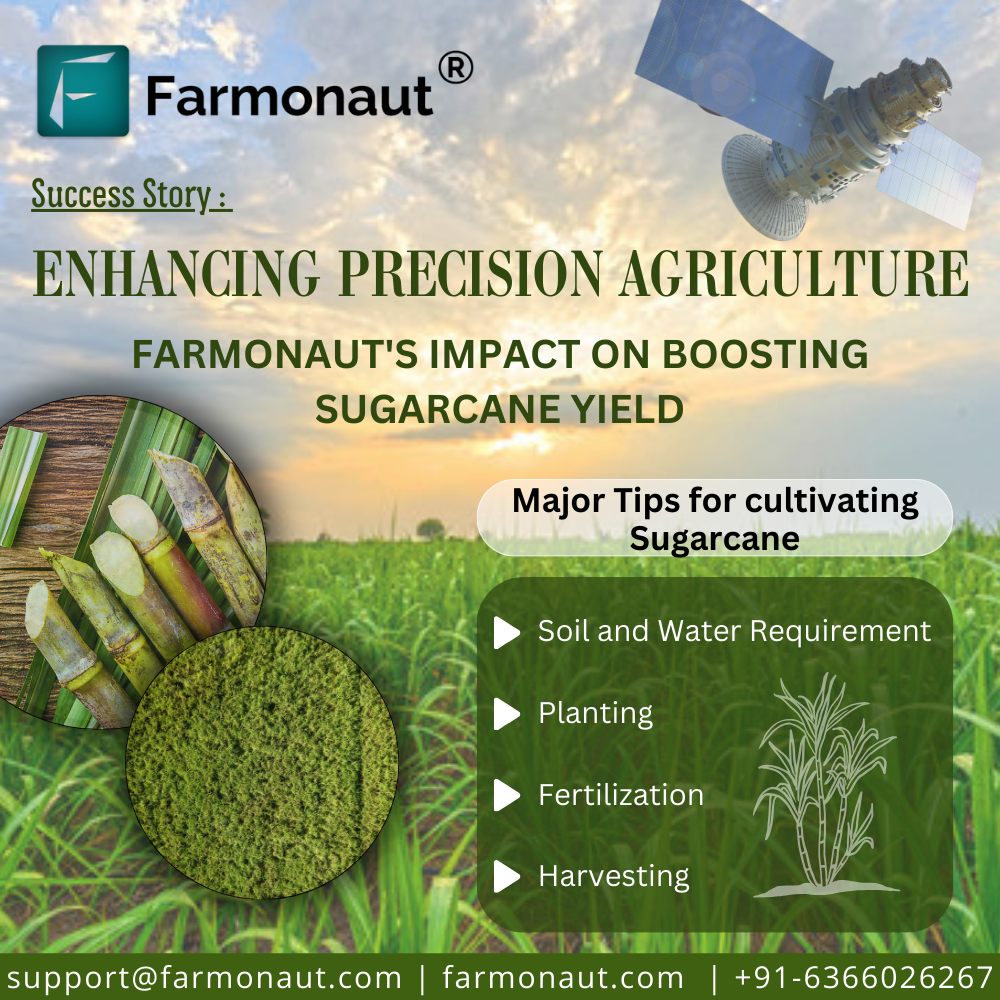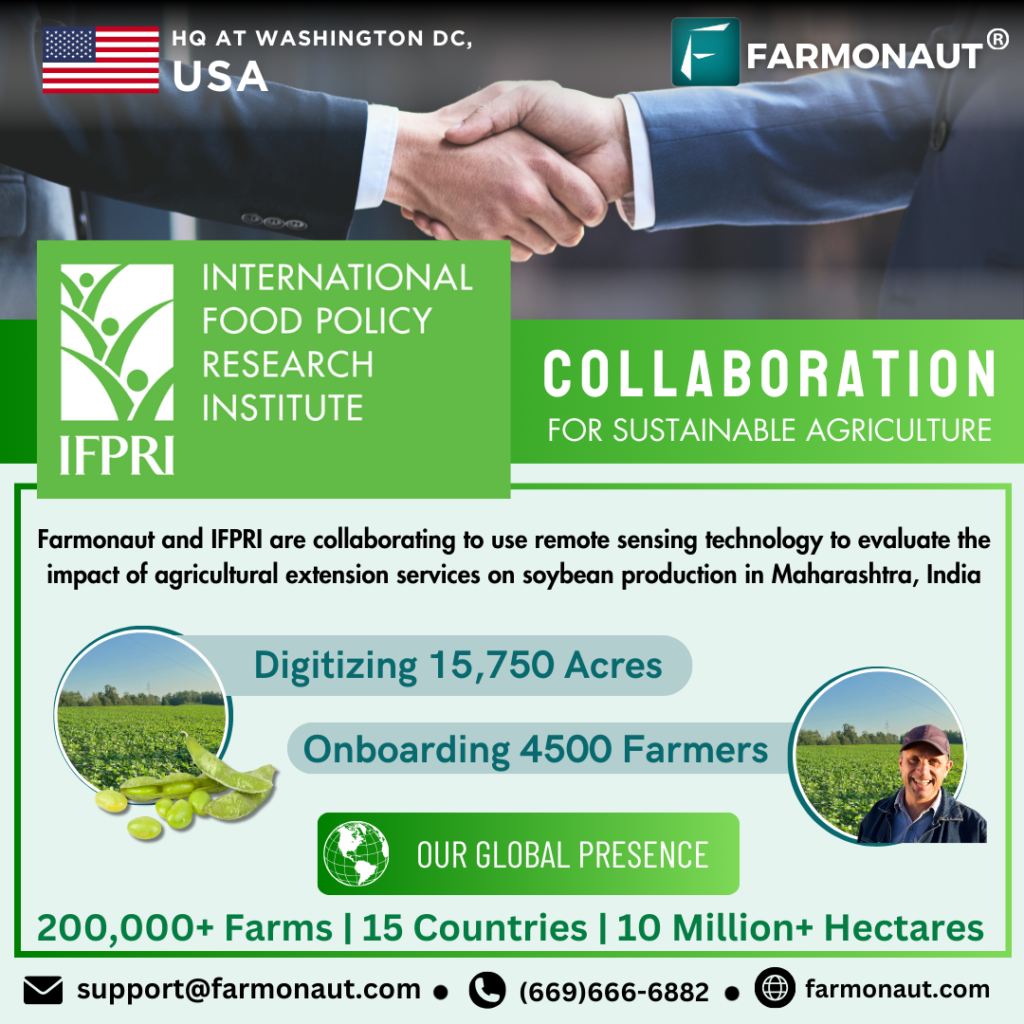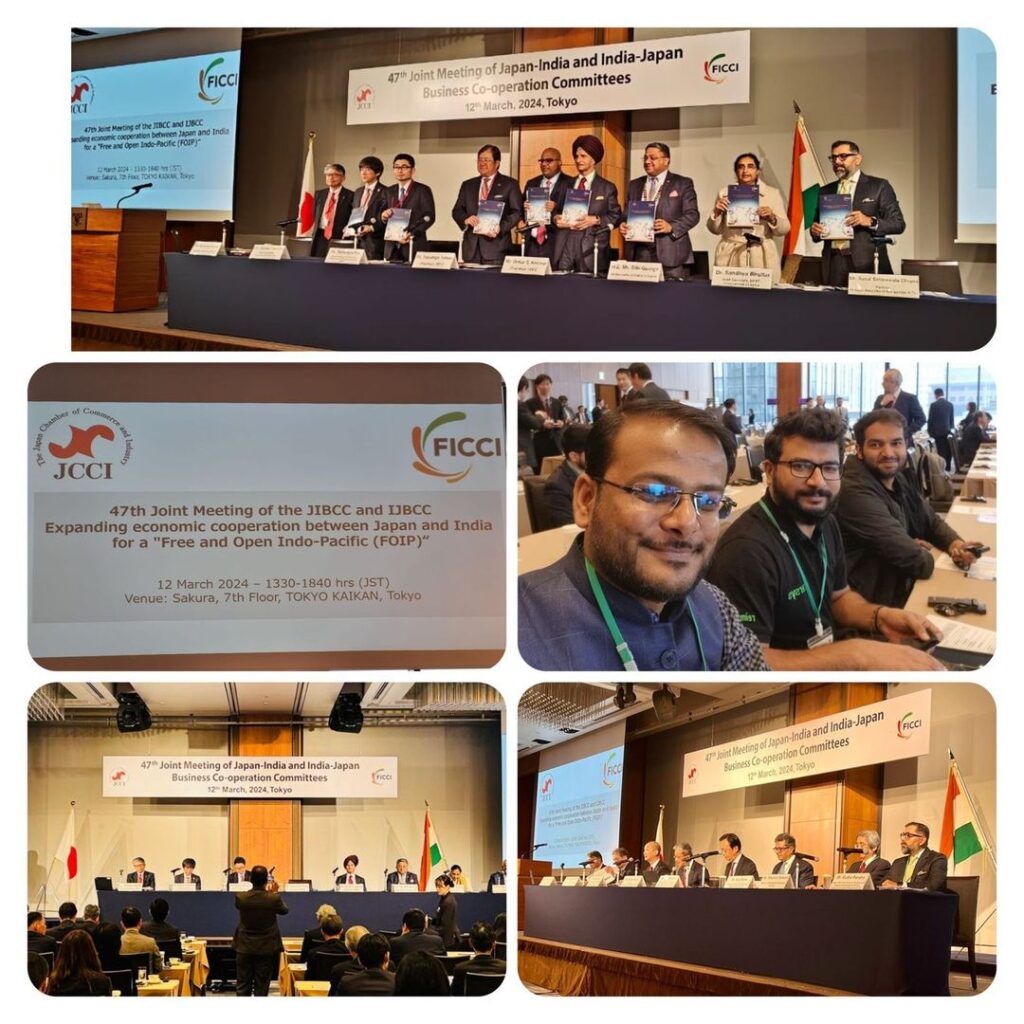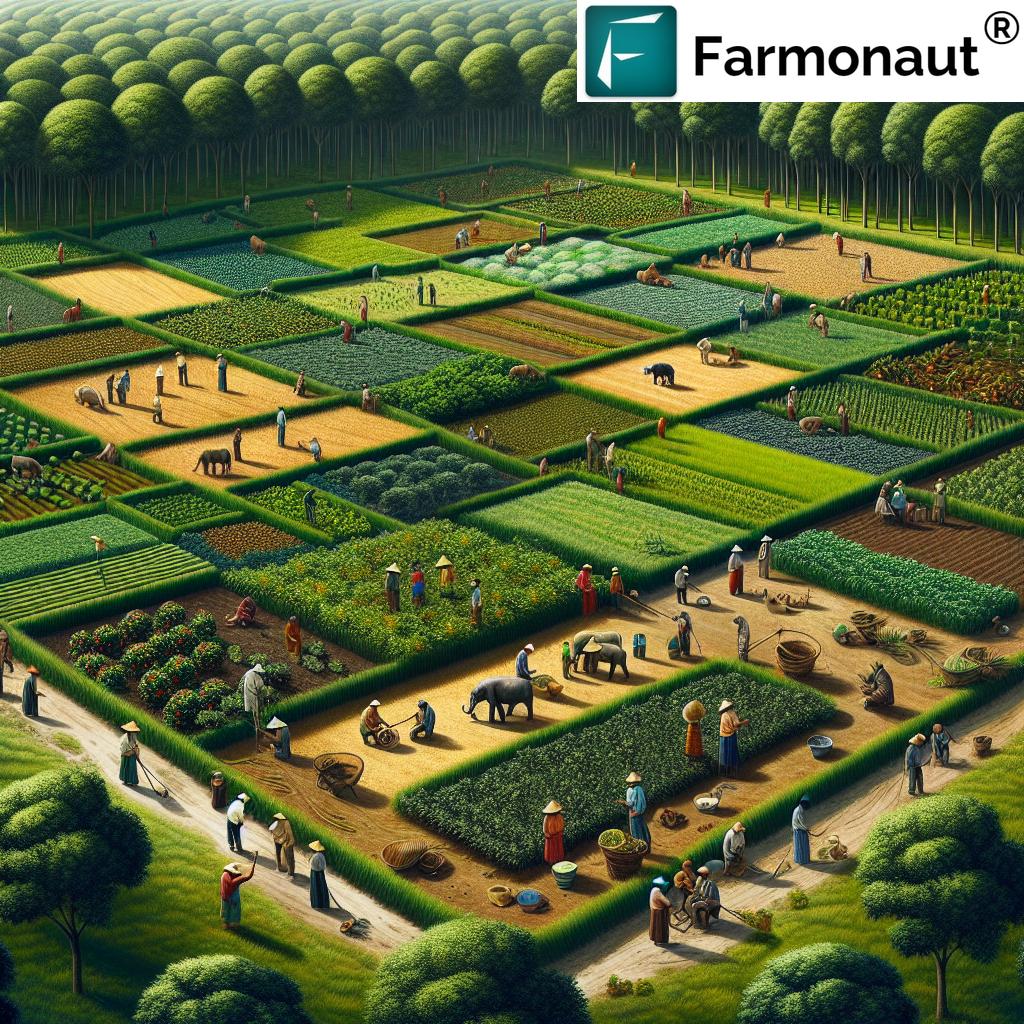7 Shocking Ways to Slash Agriculture’s Carbon Footprint
Understanding the carbon footprint in agriculture, farming, and forestry is vital as these sectors are both crucial for food security and major contributors to greenhouse gas (GHG) emissions. As global citizens and responsible stewards of the land, we must actively seek out revolutionary strategies and practices to reduce emissions and foster environmental sustainability.
Table of Contents
- Summary: Understanding the Carbon Footprint in Agriculture, Farming, and Forestry
- Major Sources of Greenhouse Gas Emissions in Agriculture
- Why Slash Agriculture’s Carbon Footprint?
- 7 Shocking Ways to Slash Agriculture’s Carbon Footprint
- Comparison Table: Sustainable Practices vs Carbon Reduction
- How Farmonaut Empowers Climate-Smart Agriculture
- Access Farmonaut’s Carbon Footprinting and More
- Top Technologies Revolutionizing Carbon Management in Agriculture
- Challenges in Implementing Climate-Friendly Practices
- FAQs: Reducing GHG Emissions in Agriculture
- Conclusion: Moving Toward a Low-Carbon Agricultural Future
- Farmonaut Subscription Options
Summary: Understanding the Carbon Footprint in Agriculture, Farming, and Forestry
The carbon footprint in agriculture is the sum of all greenhouse gases—carbon dioxide (CO₂), methane (CH₄), and nitrous oxide (N₂O)—created by our farming, forestry, and land-use activities. These emissions come from practices such as livestock production, soil management, deforestation, use of fertilizers, and fossil fuel consumption in agricultural operations. Collectively, these sources contribute a significant portion of global GHGs, impacting both our climate and the resilience of our food systems.
To achieve a more sustainable future, it’s essential to adopt innovative mitigation strategies like regenerative agriculture strategies, agroforestry for climate mitigation, improved fertilizer management, and technology-driven solutions.
Major Sources of Greenhouse Gas Emissions in Agriculture
Let’s break down the sources of greenhouse gas emissions from farming and their impact on the global carbon footprint:
- Livestock Production: Ruminants such as cattle and sheep emit methane (CH₄) during digestion via enteric fermentation—a major source of agricultural GHG. Manure management is another route for both methane and nitrous oxide emissions.
- Soil Management: The application of synthetic and organic fertilizers and improper management practices can release nitrous oxide (N₂O), a greenhouse gas with almost 300 times the global warming potential of CO₂.
- Deforestation and Land-Use Change: Converting forests—especially in tropical regions—for agriculture leads to massive CO₂ releases and loss of carbon sequestration in soil and biomass.
- Energy Consumption: Modern agricultural operations (e.g., tilling, harvesting, irrigation, processing) rely heavily on fossil fuels, resulting in significant CO₂ emissions.
Why Slash Agriculture’s Carbon Footprint?
We face mounting climate change and environmental degradation. The agricultural sector is in a pivotal position: while it is a significant emitter (up to 30% of total GHG emissions), it also holds the keys to mitigation and carbon sequestration. Focusing on sustainable agriculture practices and climate-friendly farming techniques directly impacts not only our food supply, but also global efforts to keep temperature rise well below 2°C.
- Food security depends on a stable climate and healthy ecosystems
- Mitigating emissions from farming is essential for achieving Net Zero goals
- Implementing regenerative practices creates more resilient, productive, and profitable farms
Now, let’s dive into the 7 shocking strategies—from soil to policy—that can dramatically slash agriculture’s carbon footprint and secure a sustainable future for all.
7 Shocking Ways to Slash Agriculture’s Carbon Footprint
1. Regenerative Agriculture: Restoring the Soil, Capturing Carbon
Regenerative agriculture strategies focus on building healthy, resilient ecosystems—especially soil health—which is crucial for both crop productivity and carbon sequestration in soil. By restoring organic matter, we can capture and store atmospheric CO₂ at impressive rates.
- No-till or Reduced-till Farming: Avoids the massive release of soil carbon, preserves structure, and minimizes erosion.
Fact: “Switching to no-till farming can cut soil carbon emissions by up to 30% compared to conventional tillage.” - Crop Rotation & Cover Cropping: Diverse crop rotations interrupt pest cycles, replenish soil nutrients naturally, and increase carbon storage.
- Application of Compost and Manure: Improves soil fertility, promotes microbial life, and locks away more carbon as stable soil organic matter.
Our Carbon Footprinting solution tracks, quantifies, and helps optimize these regenerative practices for measurable GHG reduction.
2. Agroforestry for Climate Mitigation: Integrating Trees in Farming Systems
By integrating trees and shrubs into our farm landscapes, we tap into one of nature’s best carbon sinks while creating a web of ecological benefits. Agroforestry for climate mitigation works on two fronts:
- Above-ground: Trees absorb and capture CO₂ through photosynthesis, building extensive biomass
- Below-ground: Roots stabilize and enrich the soil, sequester carbon, and foster healthy soil microbial activity
Techniques such as alley cropping, windbreaks, and riparian buffer strips provide not just emission reductions, but also improved biodiversity, habitat for pollinators, and increased farm resilience to extreme weather.
Explore practical guidance via our crop plantation and forest advisory to build robust agroforestry systems.
3. Improved Livestock Management: Tackling Methane at the Source
Livestock—especially ruminants like cattle—are major methane emitters (CH₄) due to enteric fermentation in their digestive process. Reducing methane emissions involves:
- Enhanced Diets: Feeding strategies with improved nutrition and methane-reducing additives (e.g., tannins, oilseeds, seaweed extracts) lower emissions per unit of milk or meat.
- Effective Manure Management: Storing manure as solid rather than slurry, regular removal, and treatment methods (e.g., anaerobic digestion) reduce both methane and nitrous oxide.
- Breeding and Herd Management: Selecting more productive animals and optimizing herd sizes amplify efficiency and cut overall emissions.
For bigger operations, leveraging fleet & resource management tools can optimize logistics and reduce the indirect emissions from feed, transport, and equipment use.
4. Improved Fertilizer Management: Precision and Timing for Lower Emissions
Fertilizer application can be a double-edged sword: while it’s essential for high yields, excessive or mistimed use leads to nitrous oxide (N₂O) emissions and environmental harm. Cutting emissions requires:
- Precision Agriculture: Use satellite, drone, and AI-based systems to apply just the right type and amount, exactly when and where needed, avoiding over-fertilization.
- Nitrification Inhibitors: Special additives that slow down microbial conversion of N in the soil, thus limiting N₂O release.
- Switching Fertilizer Types: Favor organic or slow-release formulations for better soil carbon management.
Our Jeevn AI advisory system and precision weather/satellite API help farmers fine-tune input use, directly supporting improved fertilizer management goals and reducing GHGs.
5. Reforestation & Afforestation: Restoring Earth’s Lungs
Restoring degraded land and planting trees on previously unforested terrain can capture atmospheric CO₂ on a grand scale. Reforestation and afforestation projects:
- Directly store carbon in trunk, branches, roots—providing a long-term sink for excess CO₂
- Support ecosystems, water cycles, and microclimates, increasing the resilience of surrounding landscapes
- Offset part of the inevitable emissions from other sectors of agriculture
The most effective carbon offset strategies prioritize native species and local ecology for maximum sequestration and co-benefits—see our forest advisory modules for guidance.
6. Energy & Resource Efficiency: Cutting CO₂ in Farm Operations
Reducing CO₂ emissions from energy-intensive operations is critical. How do we do it?
- Switch to Renewable Energy Sources: Solar panels, wind turbines, or biogas digesters can power irrigation and mechanized farming.
- Optimize Field Operations: Plan routes, consolidate activities, and maintain equipment for efficient fuel use.
- Fleet Management: Leverage digital tracking (see our fleet management platform) for efficient use of tractors and vehicles, cutting both costs and emissions.
7. Policy, Incentives & Farmer Training: Unlocking Systemic Change
None of these mitigation strategies work in isolation. We need:
- Policy Support: Realignment of government incentives to reward regenerative practices and climate-friendly farming techniques, not just yield-maximization.
- Direct Payments/Carbon Markets: Paying farmers for sequestering carbon, reducing GHGs, or providing ecosystem services makes sustainable choices more attractive.
- Farmer-Centric Knowledge and Training: Modern extension services should focus on sharing the latest knowledge and practical training so everyone—from smallholders to large agribusiness—can access, understand, and implement innovation with confidence.
Explore solutions for connecting farmer training to actionable data through our large-scale farm management and advisory services.
Comparison Table: Sustainable Practices and Estimated Carbon Footprint Reduction
| Sustainable Practice | Brief Description | Estimated Carbon Footprint Reduction (%) | Additional Environmental Benefits |
|---|---|---|---|
| Regenerative Agriculture (No-till, Crop Rotation) | Restores soil health, increases organic carbon, reduces tillage and disturbance | 20–30% | Boosted soil fertility, drought resilience, water retention |
| Agroforestry | Integrates trees, shrubs, and crops/animals for multi-layered carbon capture | 5–20% | Biodiversity support, erosion control, microclimate improvement |
| Enhanced Livestock Management | Optimizes feeding, breeding, manure handling to reduce methane and N₂O | 10–25% | Improved animal health, manure as resource, reduced pollution |
| Improved Fertilizer Management | Precision application, nitrification inhibitors, better timing & types | 10–15% | Cleaner water, lower input costs, higher nutrient efficiency |
| Reforestation & Afforestation | Planting native trees on degraded or non-forested land | 20–40% (where implemented) | Restored habitats, flood mitigation, biodiversity increases |
| Energy & Resource Efficiency | Switch to renewable energy; streamline transport and machinery usage | 10–25% | Lower fuel costs, less particulate air pollution, extended equipment life |
| Policy, Incentives, Training | Government, market, and educational supports for all of the above | Varies (can drive sector-wide adoption) | Widespread resilience, equity, knowledge empowerment |
How Farmonaut Empowers Climate-Smart Agriculture
At Farmonaut, we believe in leveraging the best of technology and agronomy to build a more sustainable agricultural future. Here’s how:
- Satellite-Based Crop Health Monitoring: Our advanced satellite analytics monitor vegetation health via NDVI, soil moisture, and more, enabling precision agriculture practices that optimize input use and reduce emissions. With our app and API, you unlock actionable data for every field season.
- Real-Time Advisory: Jeevn AI personalizes recommendations on irrigation, fertilizer, and crop management—directly driving down your carbon and resource footprint.
- Blockchain-Powered Traceability: Our traceability platform creates verifiable transparent supply chains, essential for climate-friendly food trade and consumer trust.
- Carbon Footprinting Tools: Our carbon monitoring module helps you quantify, report, and lower GHG emissions as you implement more sustainable and regenerative practices.
- Fleet, Resource & Insurance Management: Our fleet management solutions optimize resource deployment, while our crop loan and insurance verification tools lower risks and streamline financing for sustainable enhancements.
From individual farmers to cooperatives, NGOs, and agribusinesses, Farmonaut democratizes precision agriculture and carbon management, supporting innovation across India and globally.
Access Farmonaut’s Carbon Footprinting and More
Whether you’re in the fields of Punjab, the rice paddies of Indonesia, or the cattle ranches in Brazil, Farmonaut is your partner in sustainable agriculture transformation. Get instant access to monitoring, advisory, and carbon reduction tools via:
Top Technologies Revolutionizing Carbon Management in Agriculture
- Satellite Monitoring: Near real-time field insights—vegetation, soil moisture, weather—for efficient resource use and monitoring emission progress.
- AI Advisory Systems: Intelligent recommendations for inputs (water, fertilizer), planting times, crop choices, enabling climate-friendly farming techniques.
- Blockchain Traceability: Proves adoption of sustainable practices and unlocks carbon markets for farmers implementing emission-reducing methods (learn how).
- API Integrations: Third-party and corporate clients can connect Farmonaut data into their own systems via our robust API framework.
Key Challenges When Implementing Sustainable Agriculture Practices
- Economic Constraints: Upfront investment in new equipment, training, or systems often requires credit or incentives. Remote sensing verification can help unlock access to financing and risk mitigation.
- Knowledge and Training: Farmers may lack practical access to the knowledge needed to shift to regenerative or climate-friendly practices. Digital extension, smart apps, and expert-driven systems (like Farmonaut’s advisory platform) bridge this gap.
- Policy and Incentives: Government programs and agri-subsidies are sometimes misaligned with climate objectives. We need policies that reward sustainability and resilience rather than high input/high output monoculture models.
- Monitoring Progress: Measuring, reporting, and verifying carbon sequestration or emission reductions is complex; digital tools like Farmonaut’s carbon footprinting suite make compliance, tracking, and auditing easier than ever.
Frequently Asked Questions (FAQs): Reducing Greenhouse Gas Emissions in Agriculture
What is the carbon footprint in agriculture?
The carbon footprint in agriculture refers to the total greenhouse gases—such as CO₂, CH₄, and N₂O—released into the atmosphere from all agricultural activities, including crop and livestock production, fertilizer application, farm energy use, and land use changes.
How does livestock contribute to greenhouse gas emissions from farming?
Livestock, particularly ruminants like cattle and sheep, emit methane during digestion (enteric fermentation) and from manure. Together, livestock are responsible for nearly 14.5% of total anthropogenic greenhouse gas emissions.
What are the most effective sustainable agriculture practices for lowering the carbon footprint?
Top practices include adopting regenerative farming (no-till, crop rotation, cover cropping), implementing agroforestry systems, optimizing livestock feeding and manure management, improving fertilizer use through precision agriculture, and leveraging reforestation and afforestation programs.
How can technology assist in reducing emissions from agricultural operations?
Technology—such as satellite imagery, AI-advisory systems, and digital management tools—enables precise, data-driven decisions that optimize resource use, improve timing of operations, and streamline energy consumption, all reducing the greenhouse gas footprint.
What role do carbon markets or incentives play in sustainable farming?
Carbon markets can pay farmers for sequestering carbon or reducing emissions, making sustainable strategies financially attractive. Sound government policy and incentives are key to scaling adoption across the entire sector.
Is Farmonaut an online marketplace or does it sell farm inputs?
Farmonaut is not a marketplace and does not sell any agricultural inputs or machinery. We provide affordable, advanced technology solutions for farm monitoring, carbon management, and precision agriculture via satellite and AI systems.
Farmonaut Subscription Options
Experience the power of satellite-driven, climate-friendly farm management. Choose the plan that fits your scale and ambition:
Conclusion: Moving Toward a Low-Carbon Agricultural Future
The challenge of reducing the carbon footprint in agriculture is immense, but so is the opportunity. By boldly adopting regenerative practices, agroforestry for climate mitigation, improved livestock and fertilizer management, and harnessing the power of technology, we can build agricultural systems that feed the world while helping heal our climate.
Change starts with knowledge, action, and the right partners. Join us at Farmonaut—and let’s slash emissions, restore the earth’s balance, and lead the planet into a more resilient, sustainable food future.






















